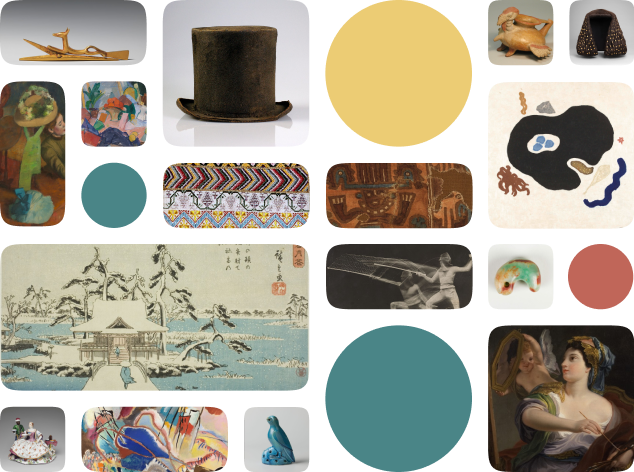Funerary Mask of a Woman
Creator Name
Cultural Context
Date
Source
About the work
Funerary masks, or death masks, have their origins in Ancient Egypt and were a way to ensure the deceased's safe passage in the afterlife. Masks were made in the likeness of the wearer from a material similar to papier-maché called cartonnage. After the deceased was mummified, the funerary mask would be affixed to the face.
Masks mirrored the wearer's beauty practices in life. This funerary mask of a woman wears a voluminous, braided wig, necklaces, and pendants. Her adornments and gold on the mask indicate the woman was of high status.
Masks mirrored the wearer's beauty practices in life. This funerary mask of a woman wears a voluminous, braided wig, necklaces, and pendants. Her adornments and gold on the mask indicate the woman was of high status.
Metropolitan Museum of Art Object Description
Mask, diadem
Work details
"--" = no data available
Title
Creator
Worktype
--
Cultural Context
Material
Dimensions
Technique
--
Language
--
Date
Provenance
Style Period
Rights
Inscription
--
Location
Source
Subjects
Topic
Curationist Metadata Contributors
All Works in Curationist’s archives can be reproduced and used freely. How to attribute this Work:
Unknown, Funerary Mask of a Woman, circa 1427 BCE–1390 BCE, New Kingdom, Egypt. Metropolitan Museum of Art. Egyptian funerary masks ensured the deceased's safe passage into the afterlife. Public Domain.
Help us improve this content!
Let our archivists know if you have something to add.
Save this work.
Start an account to add this work to your personal curated collection.
